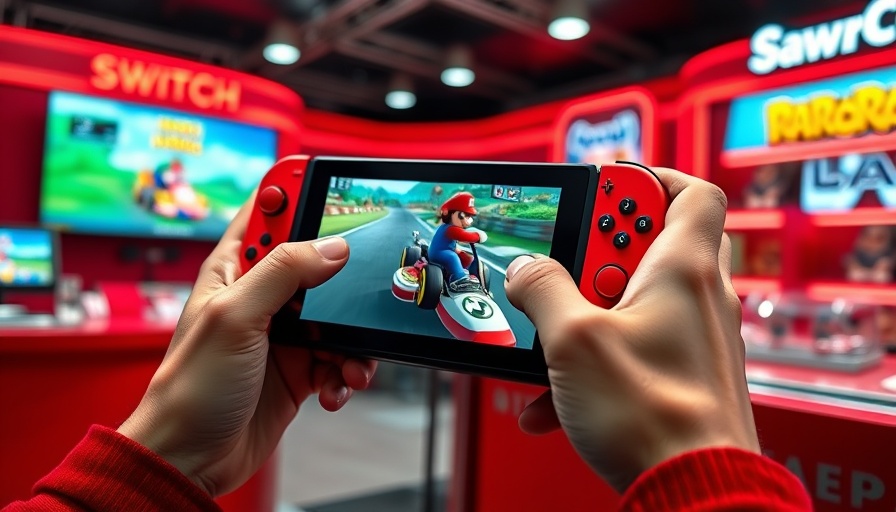
Nintendo Faces Tariffs: What It Means for the Gaming Industry
As Nintendo gears up for its much-anticipated Switch 2 launch on June 5, the company finds itself navigating a complex new economic landscape shaped by U.S. tariffs. The newly imposed tariffs could significantly affect not only Nintendo’s pricing strategies but also the broader gaming industry's dynamics.
Understanding the Impact of Tariffs on Pricing
Nintendo’s president, Doug Bowser, admitted that the tariffs were not instituted as they mapped out the pricing for the Switch 2, originally set at $450. Following President Trump's announcement of sweeping tariffs on goods imported from China, Cambodia, and Vietnam—a significant portion of Nintendo’s shipping routes—pre-orders slated to begin on April 9 have been put on hold. The need to navigate these unexpected tariffs could lead to a ripple effect in product pricing and consumer access.
Shifting Production: The New Norm for Nintendo
To mitigate potential losses from tariffs, Nintendo has already begun diversifying its production strategies, moving manufacturing facilities from China to other countries. This pivot is not only a response to tariffs but also indicative of a larger trend where companies are becoming increasingly aware of geopolitical risks and supply chain vulnerabilities. By spreading their manufacturing networks, companies like Nintendo can better absorb shocks and manage costs, ensuring long-term viability in a fluctuating economic landscape.
Competitive Landscape: How Other Companies Are Responding
The situation at Nintendo is not an isolated incident. Other leading tech companies are reflecting on similar challenges amid tariff implications. For instance, top competitors like Sony and Microsoft are similarly re-assessing their supply chains. With the global gaming market heavily reliant on components manufactured across Asia, how each of these companies manages risk amid trade tensions could redefine competitive advantage in the coming years.
Future Predictions: Tariffs and Gaming Prices
Predicting the future of gaming and its pricing becomes challenging in the context of tariffs. If tariffs remain in place, we could witness a dramatic shift in how consoles are priced, with consumers facing the bittersweet realization that their favorite games may come at a higher cost. This anticipated price increase may lead to consumer pushback as loyalty is tested against affordability. Analysts speculate that gaming may evolve into a two-tier system where high-budget titles suffer less while indie games thrive on a lower price spectrum.
Impact on Gamers: What This Means for You
For gamers, the uncertainty around the Switch 2 and other upcoming releases raises concerns about accessibility. Will rising prices deter new entrants into the gaming ecosystem? How might this affect game development budgets, resulting in fewer innovative titles hitting shelves? Consumer engagement and content availability could significantly decrease—challenges that both developers and gamers must confront.
Assessing the Bigger Picture: Beyond Nintendo
Nintendo's struggles serve as a microcosm of broader economic challenges faced by businesses globally. The interaction between tariffs, production methods, and consumer behavior will likely have uplifting and detrimental effects rippling through various sectors. Observers should remain attentive to how other tech and gaming industries will respond and adapt in this new reality.
Taking Action: What Enterprises Can Learn
Business leaders can gather valuable insights from Nintendo’s current predicament. It's crucial to anticipate economic shifts and be prepared with contingency plans for supply chain reliability. With constant changes in trade policy and economic climates, proactive reassessment can empower companies to thrive against the odds.
As the gaming industry prepares for the impending Switch 2 launch, consumers should stay informed through reliable tech blogs and news sites. Understanding the implications of these tariffs not only enriches gamer insights but also arms them for future purchases in a rapidly evolving marketplace.
 Add Row
Add Row  Add
Add 



Write A Comment